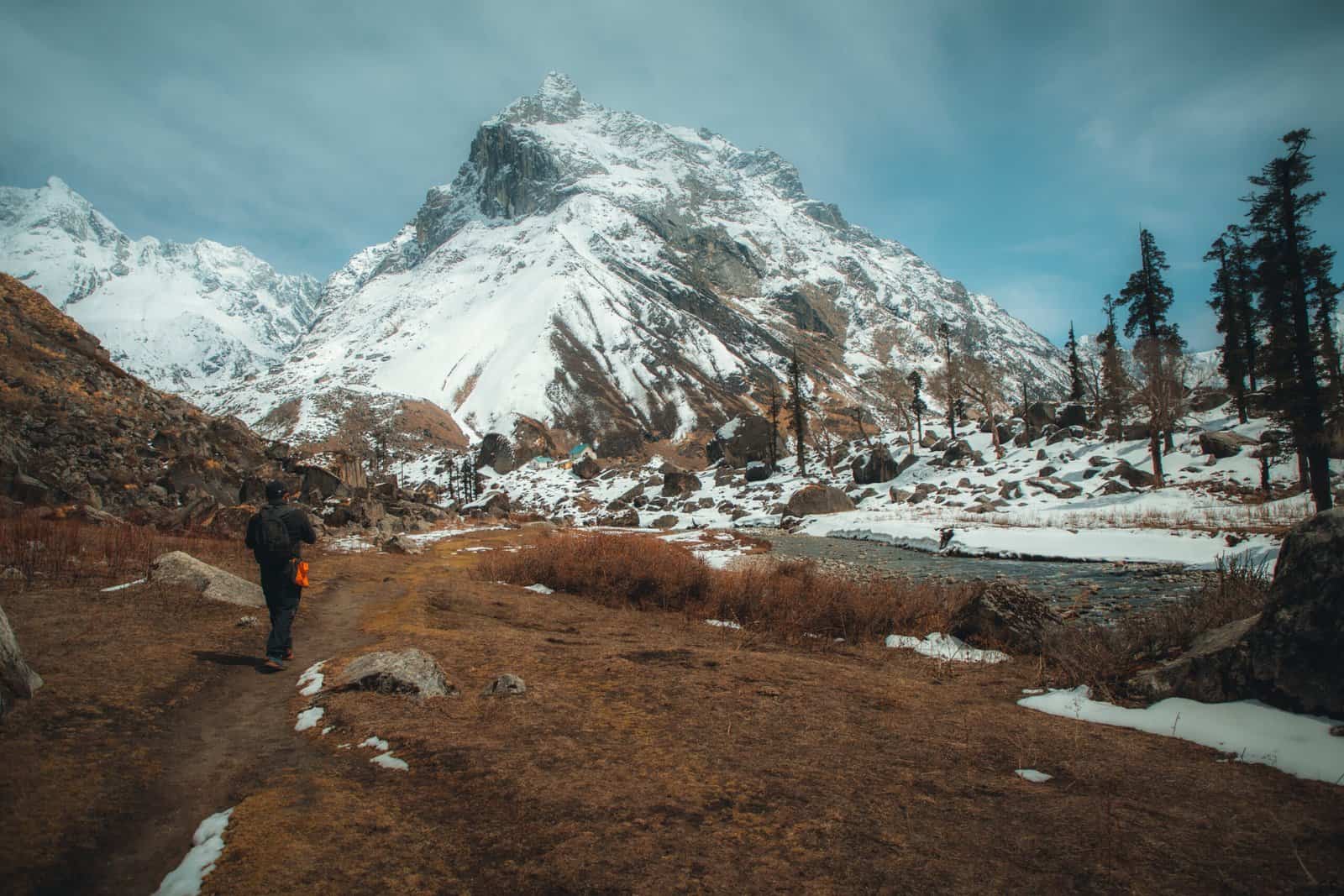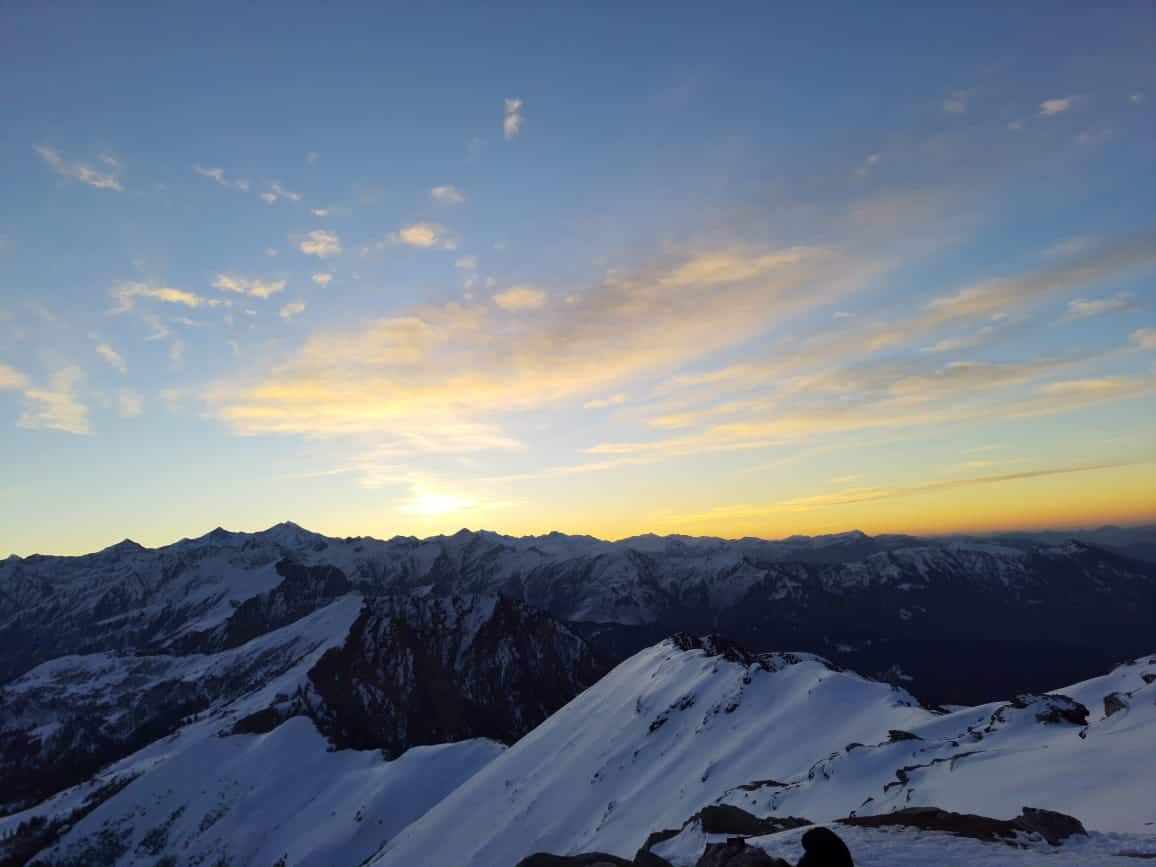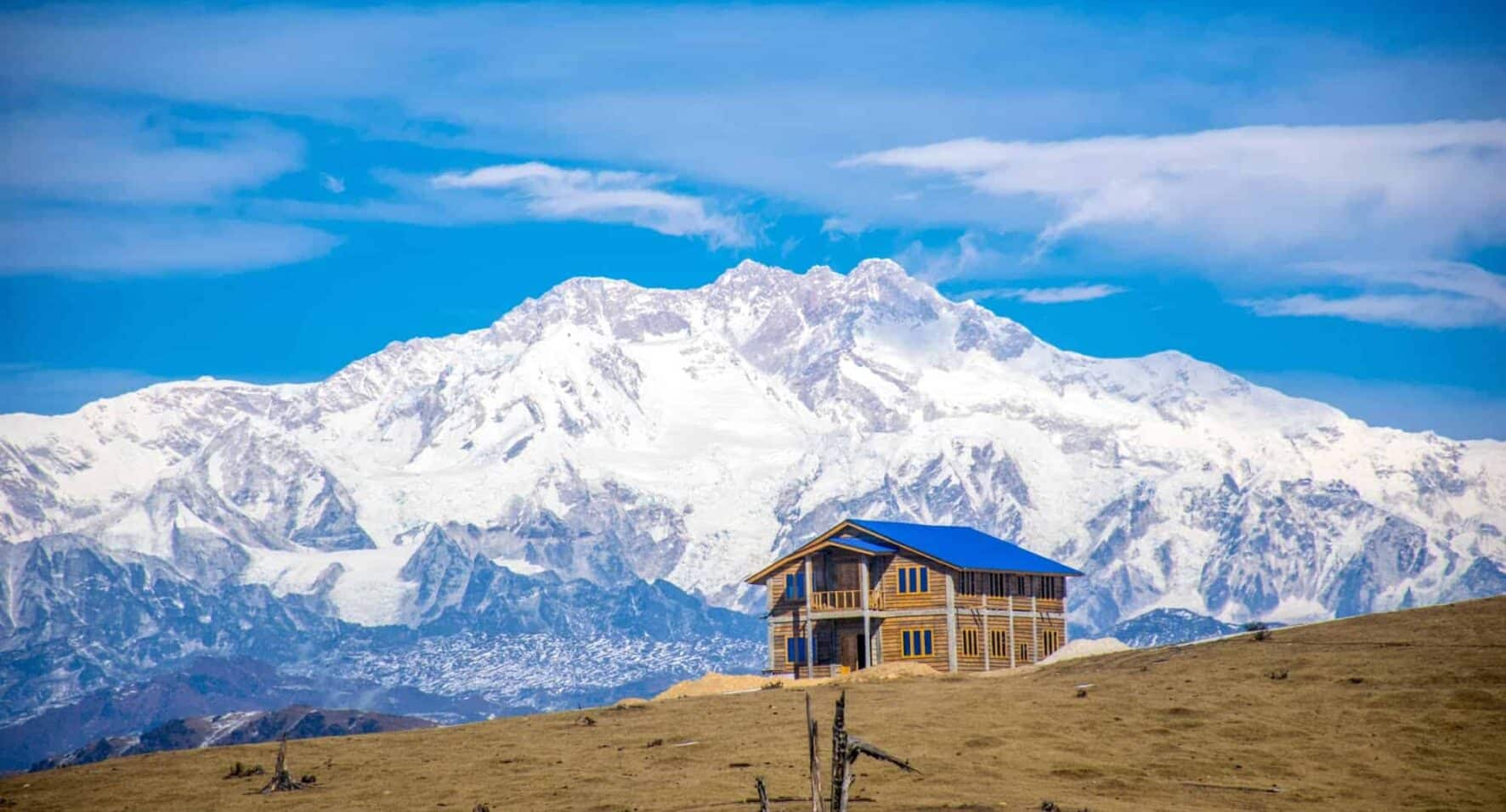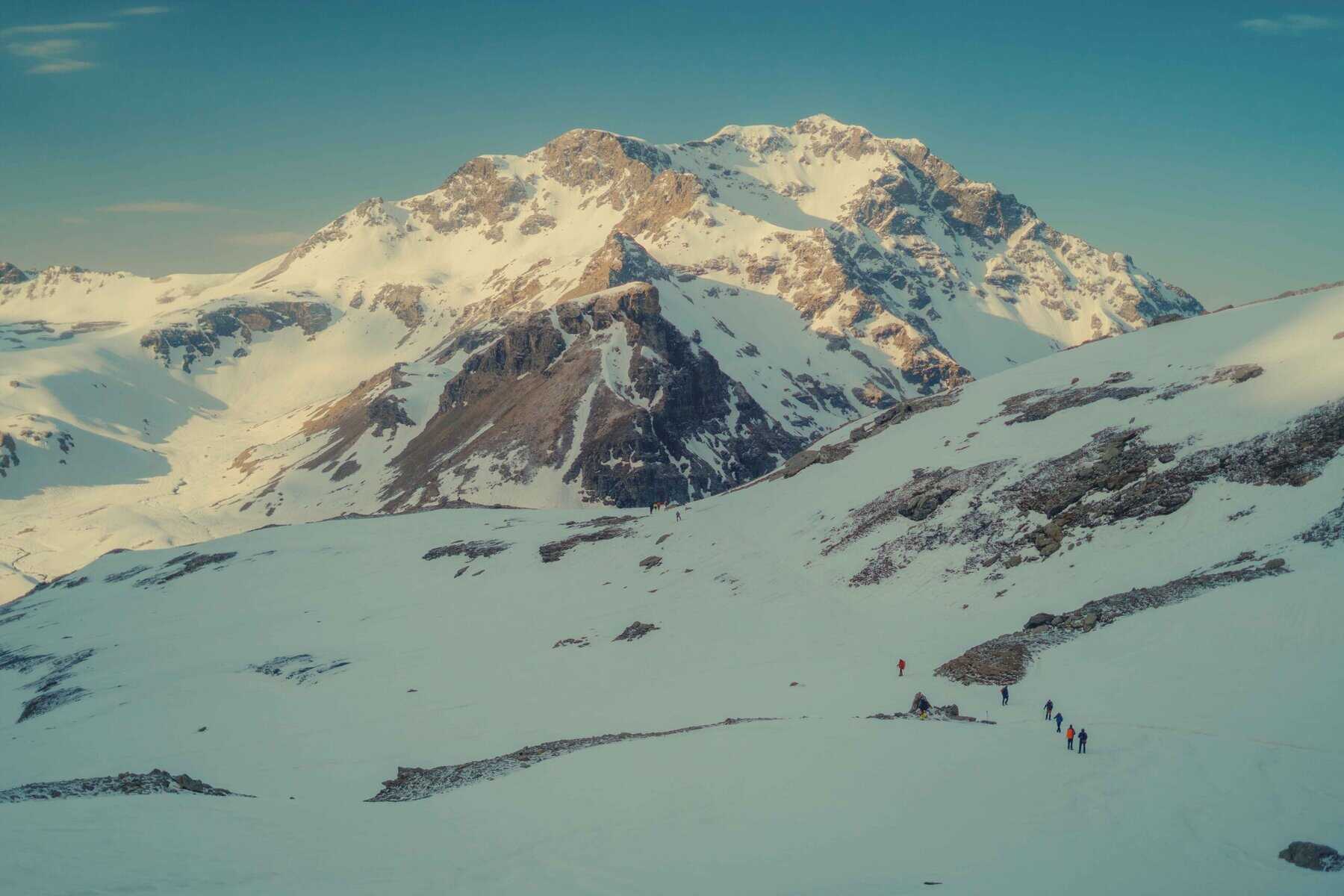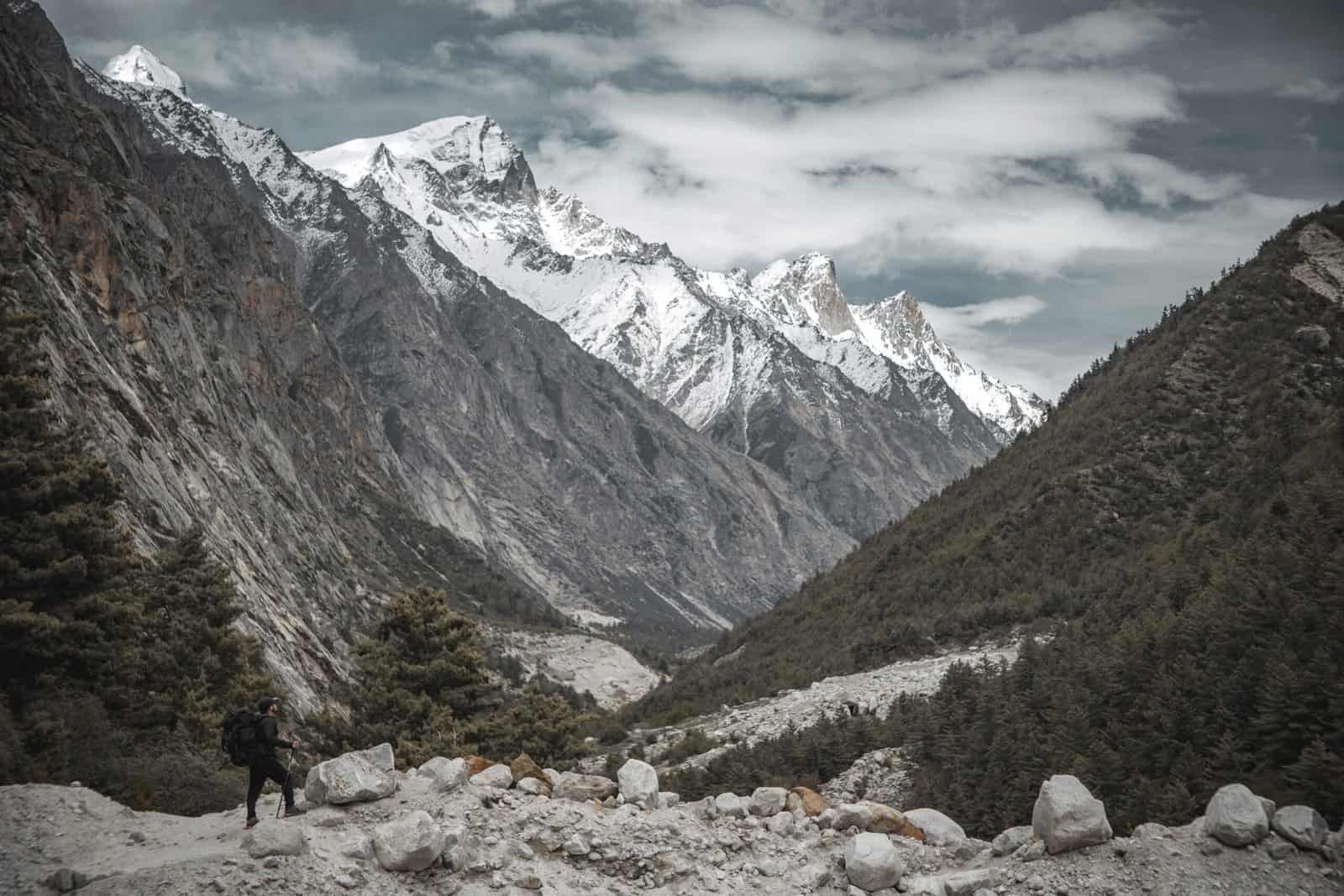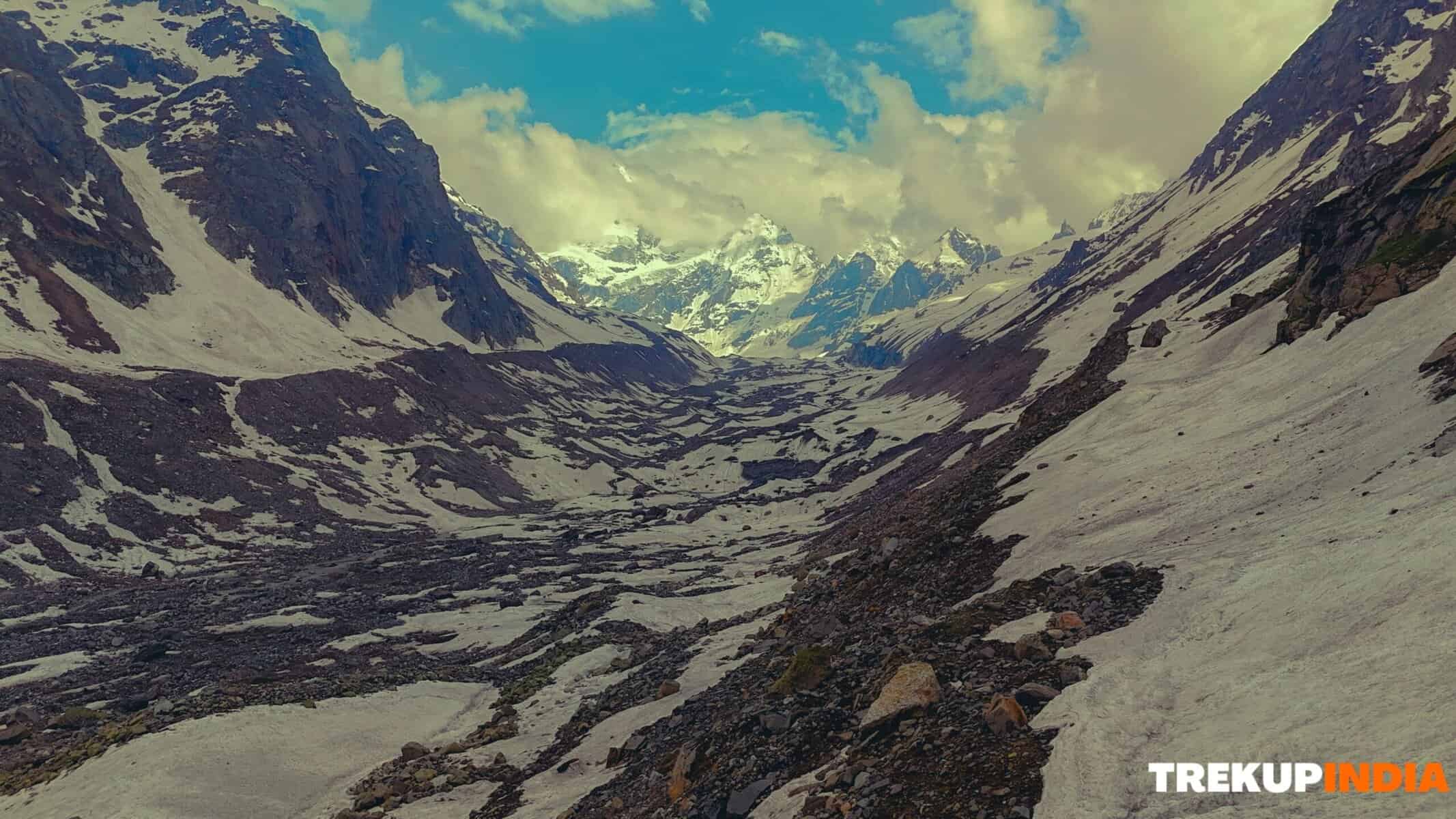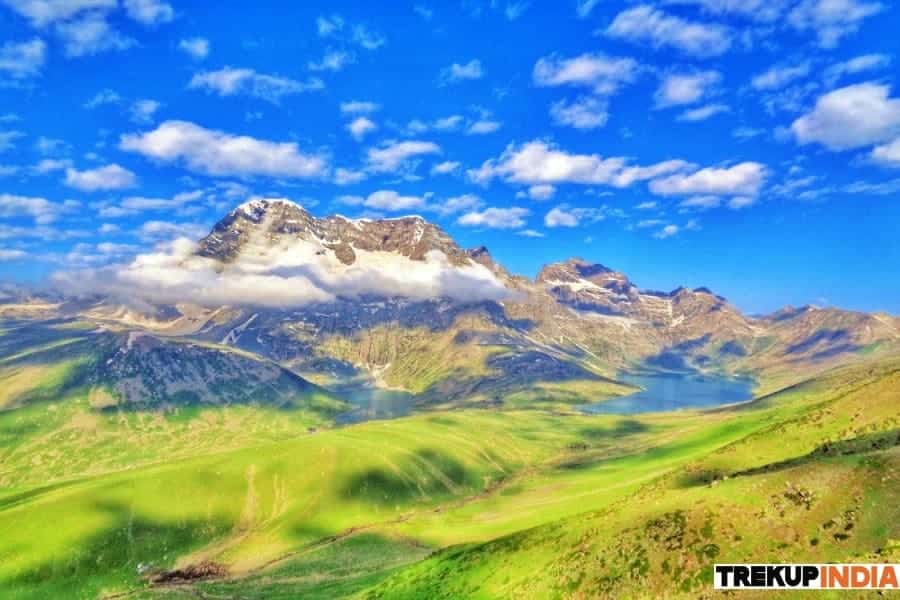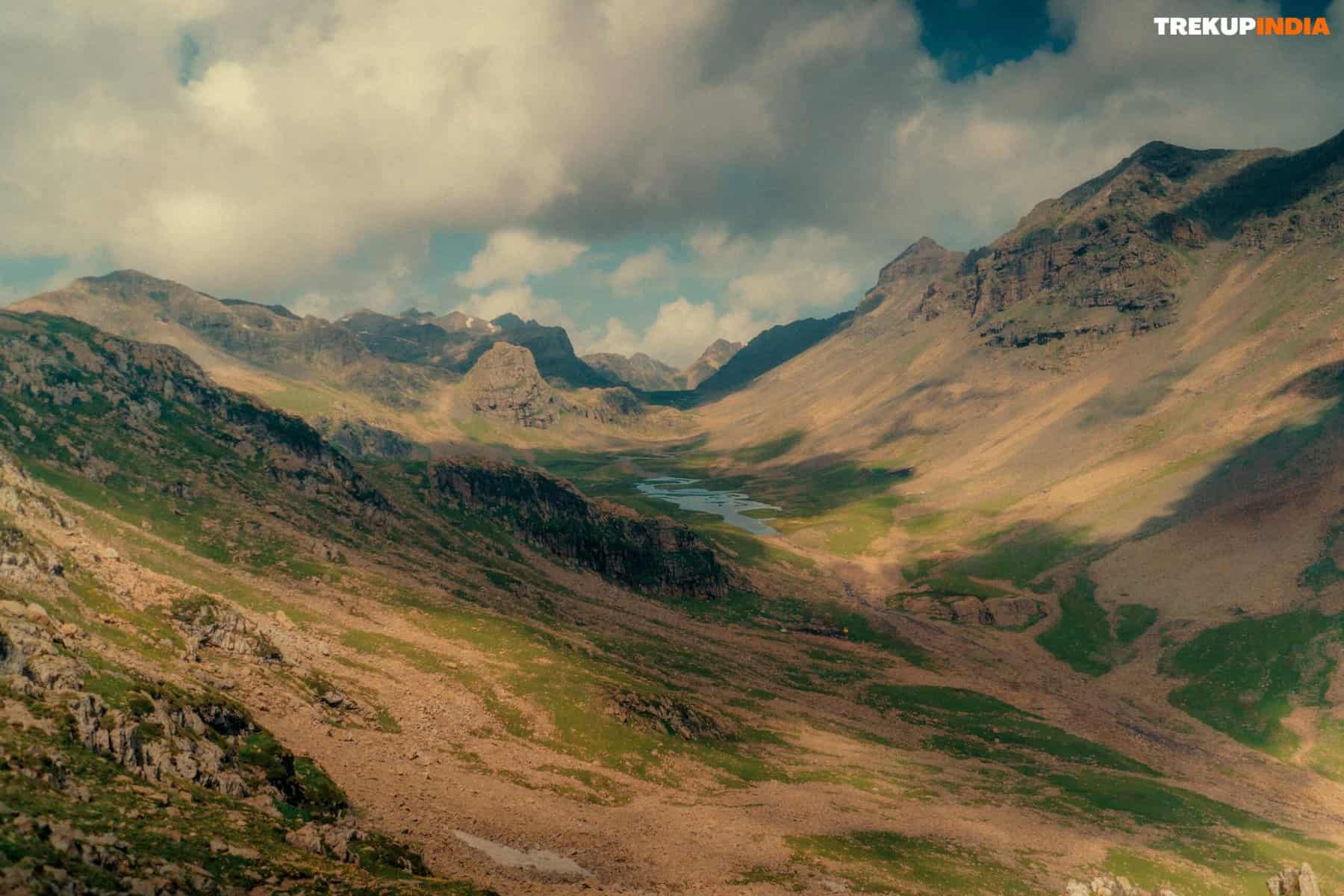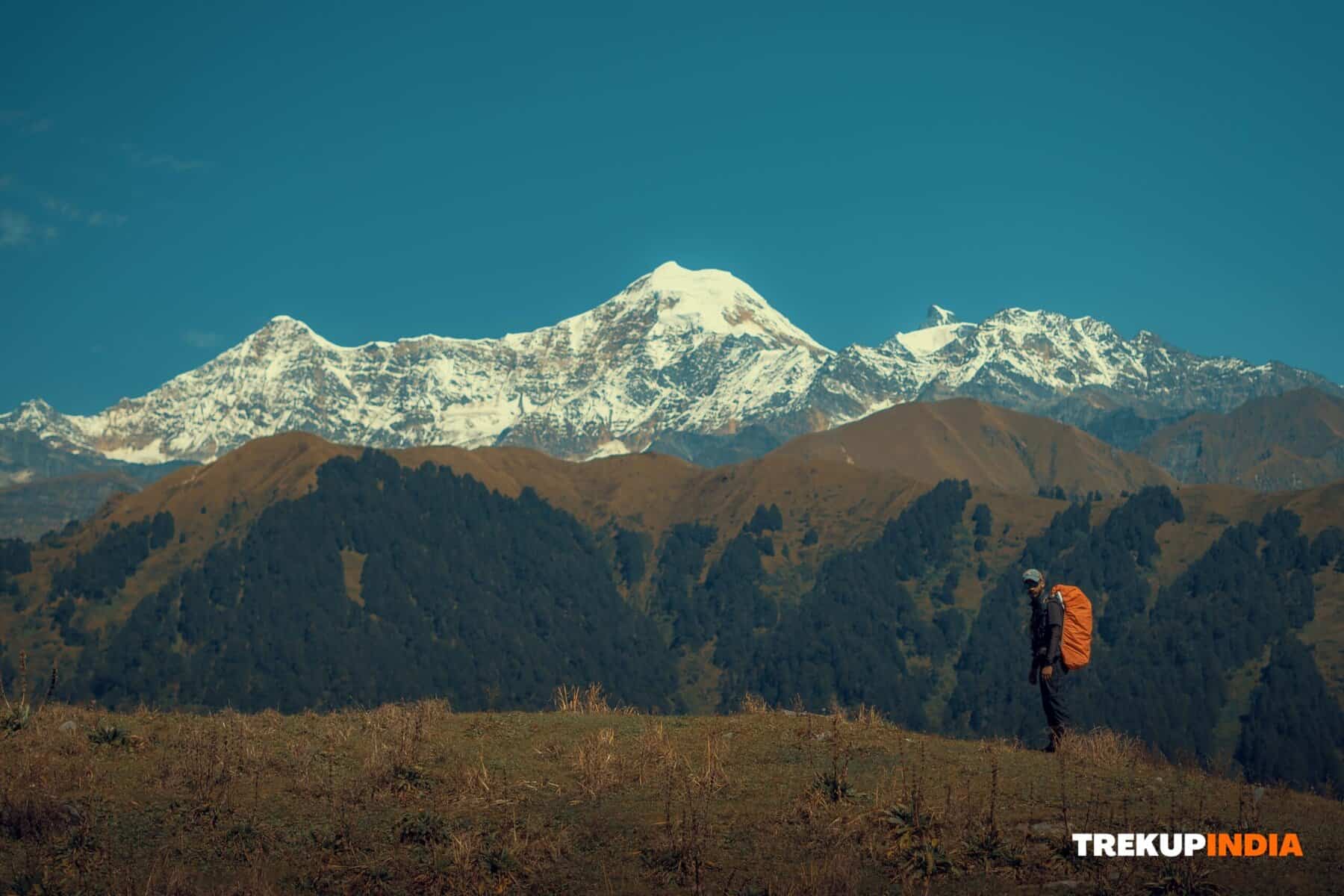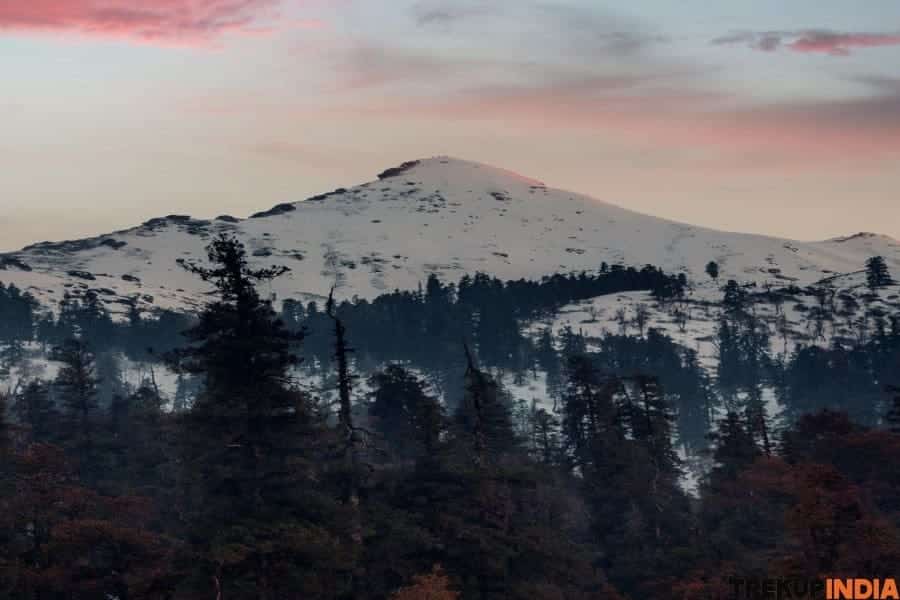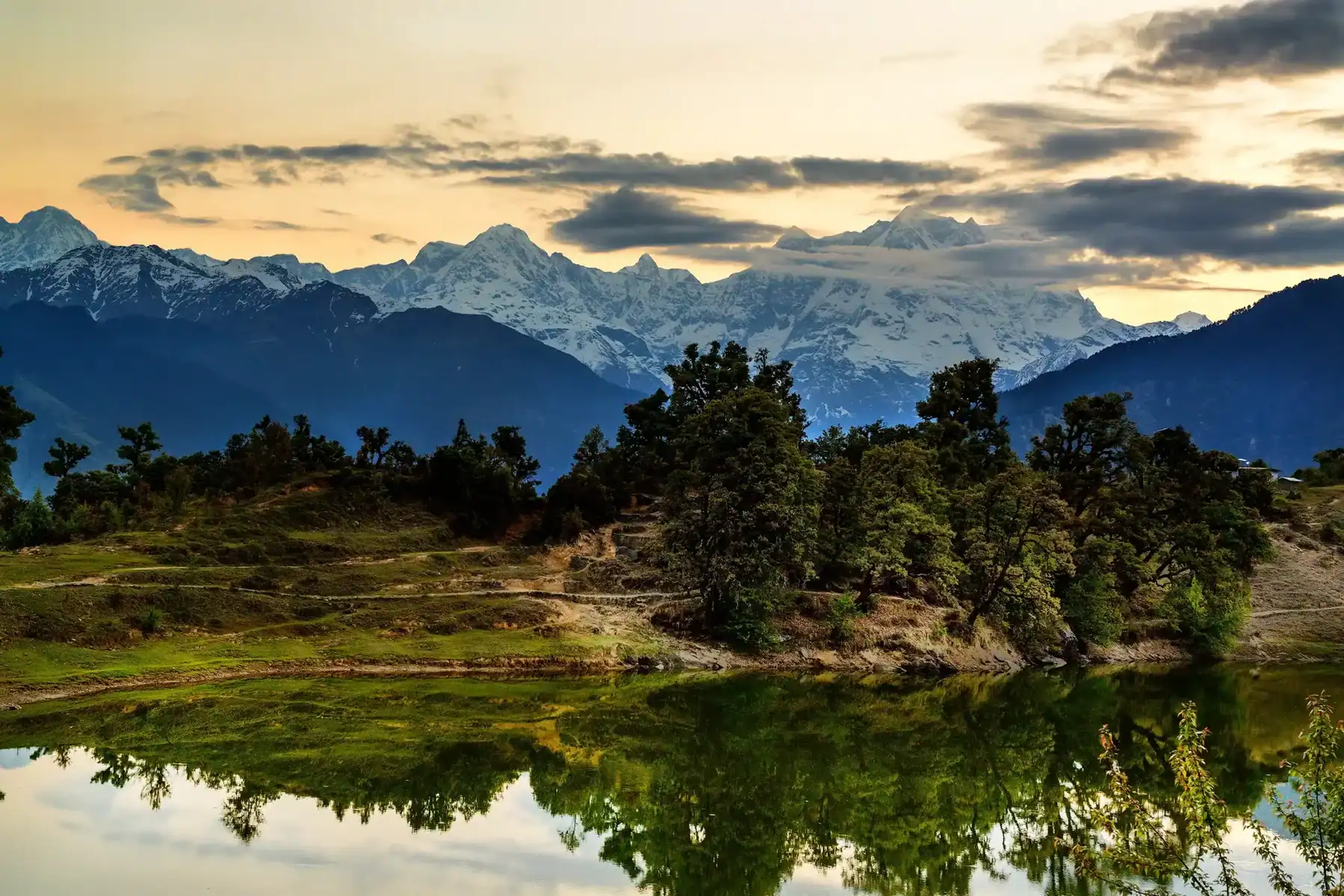Ultimate Kedarkantha Trek Guide: Unleash Adventure!
Tucked away in the Garhwal Himalayas of Uttarakhand, the Kedarkantha Trek is one of those winter adventures that sticks with you long after it’s over. It’s not just about reaching the summit (though that part is amazing)—it’s about the entire journey through this snow-covered wonderland.
From walking beneath towering pine trees dusted in fresh snow to crossing frozen lakes and soaking in wide-open mountain views, the landscape keeps changing and surprising you at every turn. The trail winds through quiet forests, charming campsites, and finally climbs up to the Kedarkantha Peak, where the views make every step feel worth it.
If you’re thinking about taking on this snowy escape, we’ve put together a detailed guide to help you get the most out of the experience. Whether it’s your first winter trek or you’ve done a few already, this guide covers everything you’ll need to know—so you can focus more on the adventure and less on the what-ifs.
1. Location & Accessibility

The Kedarkantha Peak sits quietly inside the Govind Pashu Vihar National Park in Uttarakhand, surrounded by layers of untouched snow and pine forests that feel straight out of a postcard. The journey to this beautiful summit begins from Sankri, a small, peaceful village that’s become a favorite starting point for trekkers heading into the Himalayas.
Sankri itself is pretty charming—one of those places where you immediately feel like time slows down a bit. It’s nestled deep in the mountains, yet getting there is surprisingly easy. Whether you’re coming from Dehradun or Rishikesh, the roads are well-maintained and the drive is scenic enough to make you forget how long it takes.
For many, the moment they arrive in Sankri marks the true beginning of the adventure. From there, the Kedarkantha trail winds through snowy meadows, dense forests, and quiet mountain paths—all leading up to that unforgettable summit view.
2. The Height Of Kedarkantha Trek

The Kedarkantha Trek rewards you with some truly stunning views of the Greater Himalayan Ranges, especially when you finally make it to the summit—standing proudly at around 12,500 feet. It’s one of those moments where you just stop, take a deep breath, and feel like you’re on top of the world (because, well, you kind of are).
The journey kicks off from Sankri, a lovely little base camp village tucked away at about 6,400 feet. From there, the trek climbs gradually over three days, giving your body the time it needs to get used to the altitude. It’s a smart, slow build-up that helps most trekkers acclimatize comfortably—so you can enjoy the trek instead of worrying about feeling sick or worn out.
Honestly, that pace is part of what makes the experience so special. You’re not just rushing to the top—you’re really soaking in every step of the journey. And by the time you reach the summit, you’re not just ready for the view… you’ve earned it.
3. The best time to do the Kedarkantha Trek
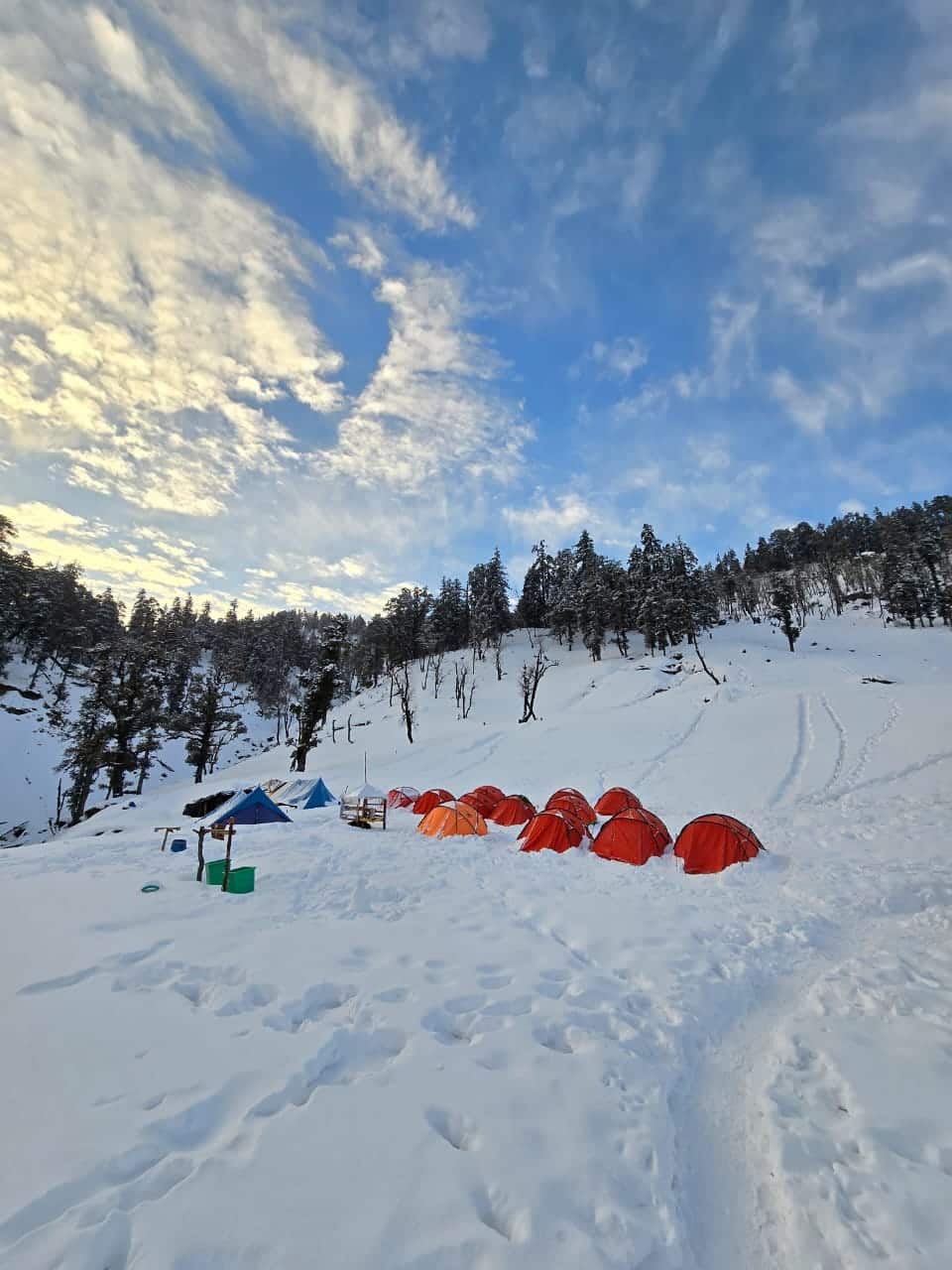
If you’re thinking about doing the Kedarkantha Trek, the best time to go is during the winter months—anytime from December to April. This is when the whole region turns into what honestly feels like a real-life snow globe. The trail gets covered in fresh powder, the trees are frosted white, and everything has that peaceful, magical winter vibe you don’t often get elsewhere.
Trekking through the snow definitely adds a bit more challenge—expect frozen lakes, dense alpine forests, and some crisp mountain air that’ll really wake you up in the mornings. But that’s part of what makes it so unforgettable. There’s something incredibly rewarding about pushing through that chill and reaching those quiet, snow-dusted campsites or catching sunrise from the summit.
If you’re someone who loves winter and wants a true snowy adventure, Kedarkantha in winter is just about perfect. It’s cold, sure—but it’s also beautiful, peaceful, and a little bit wild in the best way.
4. How difficult is the Kedarkantha Trek?
The Kedarkantha Trek falls right into that sweet spot of being moderately challenging—which makes it a great choice if you’ve got a basic level of fitness and maybe a bit of trekking experience under your belt. It’s not overly technical, but it does ask a little something from you, especially in the winter months.
Trekking here in December or any time during winter adds a whole different vibe. The snow definitely makes things more adventurous—walking through powdery trails, navigating icy patches—it all adds a layer of challenge. But don’t worry, the trail is well-marked and the ascents are mostly gradual, so it stays very doable for most people.
And honestly, a big part of what makes this trek feel manageable—even when the weather gets intense—is the support. With experienced trek leaders by your side, you’re not just hiking blind. They know the terrain, they’ve done this route countless times, and they’re there to keep things safe and smooth.
So yes, it’s a bit tougher in winter—but if you’re up for it, it’s an amazing mix of beauty, adventure, and just enough of a push to feel proud of yourself at the end.
5. For whom is this trek appropriate?
One of the best things about the Kedarkantha trek is how welcoming and accessible it is for all kinds of people. Whether you’re brand new to trekking, have a few Himalayan trails behind you, or you’re just someone who loves being out in nature—this trek has something for everyone.
It’s a great option for families looking for a shared adventure, photographers chasing that perfect snowy sunrise, or even those who just want to hit pause on city life and breathe in some crisp mountain air. You don’t need to be an ultra-marathoner either—if you’ve got a moderate level of fitness, you’re good to go.
That’s what makes Kedarkantha special—it’s not just a trek, it’s an experience almost anyone can be a part of.
6. Highlights of the trek
The Kedarkantha Trek is already pretty special—but the way we do it? It’s got a little something extra. Our route takes a refreshingly different path from the usual Kedarkantha itineraries you’ll find out there. We’ve designed it to give you unmatched views, quieter trails, and a few surprises along the way that most trekkers never get to see.
It’s not just about reaching the summit—it’s about the whole experience: the scenery, the silence, the stories, and the small moments that make you stop in your tracks. We’ve walked this route more times than we can count, and each time, it still manages to feel a little magical.
So if you’re up for something that goes beyond the ordinary, here’s what makes our Kedarkantha trek route stand out…
7. The Kedarkantha Peak
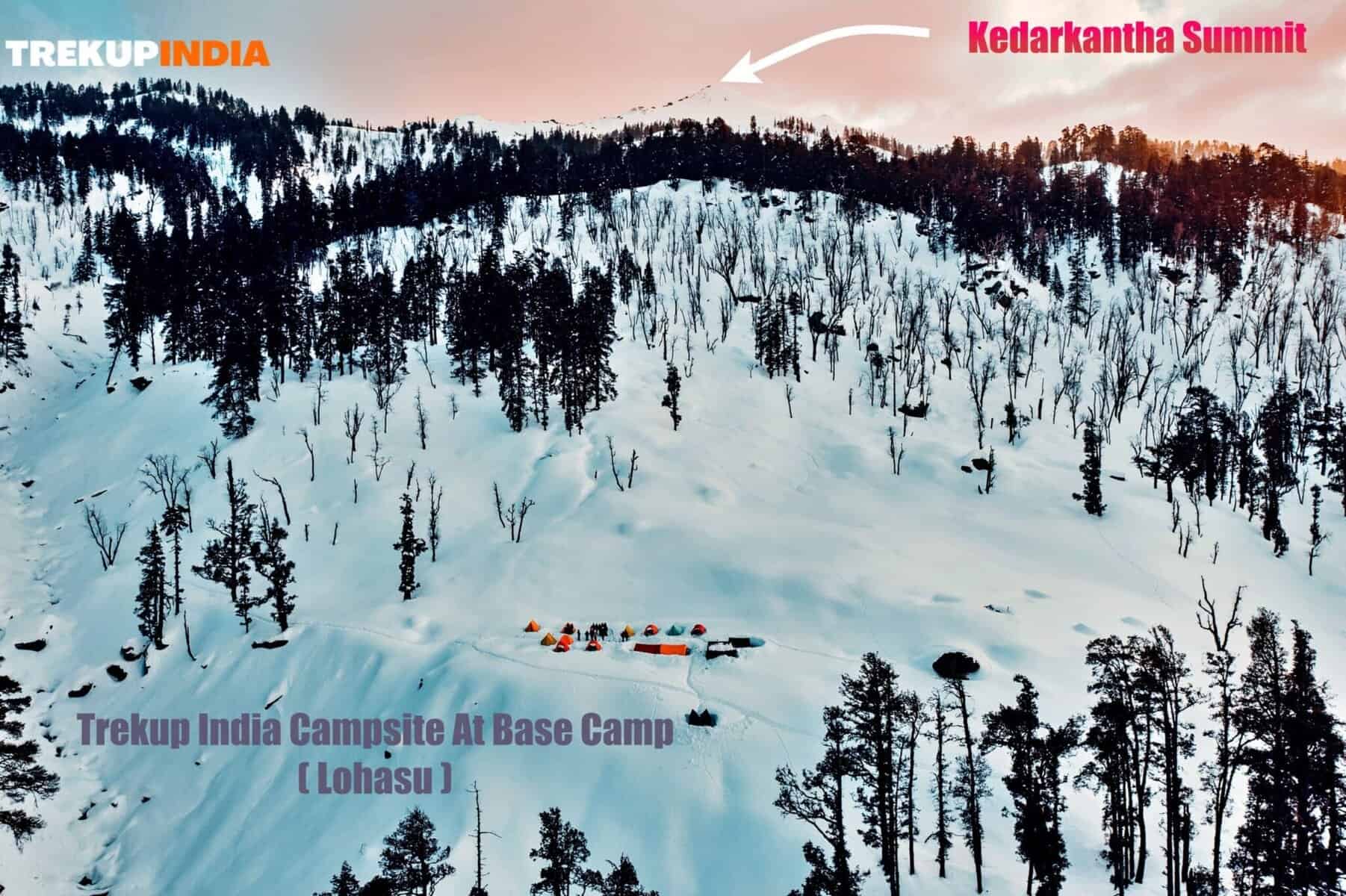
Reaching the Kedarkantha summit—perched at about 12,500 feet—is one of those moments that just stays with you. The climb up is no walk in the park; it’s challenging in all the right ways. But once you’re standing at the top, catching your breath and taking it all in, there’s this incredible mix of exhaustion and pure awe. You really do feel like you’re on top of the world.
The panoramic views of the Himalayas are absolutely stunning—like something out of a dream. And after that final push to the summit, they hit even harder. It’s not just the scenery, though. There’s a quietness up there, a kind of peace that makes all the effort feel completely worth it.
You’ll also find a small temple at the summit, dedicated to Lord Shiva, Goddess Parvati, and Lord Ganesha. It’s simple, sacred, and somehow adds to the magic of the place. People often pause here—not just to rest, but to reflect, offer a prayer, or just sit in silence for a few minutes. It’s one of those rare places where the journey and the destination both feel equally meaningful.
8. 360 Degree Panorama View from the Summit
From the top, it feels like you’re on top of the world. The view is nothing short of breathtaking—with massive peaks like Swargarohini, Bandarpoonch, and Black Peak standing tall in the distance. And if you’re lucky enough to be up there at sunrise, well, that’s when the magic really happens. As the sun starts to rise, the snow-covered mountains come alive with color—every shade of pink, gold, and orange reflecting off the icy surfaces. It’s honestly hard to describe how enchanting it feels to watch the world slowly light up like that, especially after the long trek up. It’s one of those moments where you just stop and take it all in.
9. Juda Ka Talab - View of Lake
Tucked away between a serene lake and a lush pine forest, the Juda Ka Talab campsite feels like something out of a dream. The scenery here is simply stunning, almost surreal—snow-capped mountains loom in the distance, creating a perfect backdrop. In the winter, the lake becomes a mesmerizing sheet of ice, which, I have to say, is a photographer’s absolute dream. Every angle feels like it could be a postcard.
But the lake isn’t just about looks. It actually plays a vital role for the nearby villages, providing fresh water through a natural tunnel that runs underneath. The locals have a deep reverence for it, with a fascinating story to go along with it. They believe that Lord Shiva, while meditating at Kedarkantha, created the lake with droplets of water that fell from his hair. It’s a tale that adds a sense of wonder to the already magical surroundings.
Honestly, it’s one of those places where you can’t help but sit in awe of both the natural beauty and the rich stories that fill the air.
10. Stunning Evening Skies
The Kedarkantha trek is famous for its sunsets—honestly, they’re some of the most breathtaking I’ve ever seen. Perched in the western part of the Garhwal Himalayas, the peak gives you a perfect, unobstructed view of the sun setting behind the snow-covered peaks. As the sun dips lower, the mountains slowly start to glow, shifting from that cold, blue-white light to a warm, molten gold. It’s hard to describe, but it’s one of those moments that really takes your breath away. The whole scene just feels magical, like you’re watching the world slowly change its colors. It’s the kind of sight that stays with you long after you’ve left.
11. The enchanting forest of Pine and Oak
The Pine and Oak forests on the Kedarkantha trek are something truly special. As you hike through these high-altitude alpine woods, you can’t help but feel a deep sense of peace. These forests, rugged and wild, are some of the most untouched you’ll find, and they add so much to the trek’s charm. In some spots, the trees grow so thickly that it feels almost otherworldly, like you’ve stepped into a different realm. Then, when winter arrives, everything changes. Snow blankets the branches and leaves, turning the forests into a magical wonderland that’s almost too beautiful to believe. It’s like nature’s own version of a fairytale.
12. Can we access the network while on the trek?
You can get network connectivity in Sankri, thanks to JIO and BSNL, but keep in mind, it can be a bit unreliable. Once you leave Sankri and start the trek, though, you won’t have any mobile signal for the rest of the journey. It’s a good idea to take care of any important calls or messages before you set off from Sankri. While there might be a few brief moments where you catch a signal here and there along the route, don’t count on it. So, it’s best to embrace the digital detox and enjoy the trek without distractions!
13. Will there be power available during the trek?
ChatGPT said:
You’ll have access to electricity all the way up to Sankri on the trek, but once you start the journey, don’t expect to find any charging points along the way. So, it’s a good idea to bring along spare batteries for your camera and a power bank to keep your devices juiced up. Just keep in mind that the cold can really drain batteries faster than usual, so to make sure they last, it’s best to store them in an insulated bag and tuck them into your sleeping bag at night. That little extra care will help keep everything running smoothly throughout your trek!
14. How is the accommodation during the trek?
For the Kedarkantha Trek, we’ve made sure that your accommodations are both comfortable and convenient. In Sankri, you’ll kick off your adventure with a stay at the Trekup India Hotel, where you can relax and unwind before hitting the trail. From there, the rest of your journey will involve camping at various scenic campsites along the way. To ensure you get a good night’s rest, the campsites are set up with twin-sharing arrangements, so you’ll have a cozy spot to settle in after a day of trekking. We want to make sure your trek is as enjoyable and stress-free as possible, so we’ve taken care of all the little details to make your nights comfortable.
15. Offloading Backpack (Bag)
If you’re looking to lighten your load during the Kedarkantha Trek, you can definitely take advantage of our offloading services. Just keep in mind that the cost for offloading isn’t included in the trek price, so it’ll be an additional expense.
If you book in advance, the offloading fee is Rs 1600, and if you decide to book on the spot, it’ll be Rs 2000. When using this service, be sure that your offload bag doesn’t exceed 10 kg. It’s super easy to book this service—just log in to your dashboard, and you’re good to go!
16. Cloakroom at the Base Camp?
At the Base Camp, we’ve got a secure area in our guesthouse where you can leave your luggage while you head out on the trek. It’s a convenient spot to store your bags and pick them up once you’re back. That said, we’d recommend not leaving any valuables in your stored bags, as we can’t take responsibility for them. It’s always best to keep anything important with you during the trek!
17. Nearest ATM
The nearest ATM to the trek is in Mori, which is the last stop before you reach Sankri. However, keep in mind that the ATM in Mori doesn’t always have cash available, so it’s a bit hit or miss. To be on the safe side, it’s a good idea to either bring cash with you or make sure to withdraw money while you’re still in Dehradun. That way, you won’t have to worry about running short during your trip!
18. Cloakroom at the Base Camp?
At the Base Camp, we’ve set up a secure spot in our guesthouse where you can store your luggage while you’re out on the trek. Feel free to leave your bags there and pick them up when you’re done. Just a heads-up, though—please don’t leave any valuables in your stored bags. While we do our best to keep everything safe, we can’t be responsible for anything that’s lost or damaged. Better safe than sorry!
19. Is gear available for rent at the Base Camp?
When you arrive at Sankri Base Camp to kick off your adventure, you’ll find some basic trekking gear available. However, to make sure everything goes smoothly and you’re fully prepared for the Himalayan trek ahead, it’s a good idea to sort your gear ahead of time—whether that means buying or renting. We’ve got you covered if you’d prefer to rent; we offer gear rental services for an additional fee. You can easily rent what you need right here. This way, you’ll be all set and ready for the journey!
20. Physical Conditions for Kedarkantha Excursion
The Kedarkantha Trek is a 6-day adventure through the stunning Garhwal Himalayas, with an elevation gain of 2,500 to 3,000 meters. To fully enjoy this experience, it’s important to be in good physical shape.
It’s a good idea to start training at least 4-6 weeks before the trek. Your fitness routine should include a mix of cardiovascular exercises, strength training, and flexibility work to prepare your body for the challenge.
A solid goal is to be able to walk 5-7 kilometers in about 45 minutes to an hour while carrying a backpack weighing 10-15 kg. Also, being able to climb 4-5 flights of stairs in one minute without trouble will help ensure you’re ready for the trek’s climbs.
Since you’ll be trekking at high altitudes, it’s also essential to prepare for the thinner air and the possibility of altitude sickness. If you have any medical conditions, it’s wise to check in with your doctor before you go.
In essence, the Kedarkantha Trek calls for a good mix of fitness, endurance, and mental preparation. But with the right preparation, you’ll be in the perfect position to fully enjoy this unforgettable adventure.
Cardiovascular Endurance
Building your cardiovascular endurance is key to tackling the constant movement and varying altitudes you’ll face on the trek. Running, biking, or fast walking are great ways to prepare your heart and lungs for the sustained effort required.
Strengthen Your Legs
Your legs, especially the quads and calves, are going to work hard, especially as you navigate snowy trails and steep climbs. To build strength and stamina, try activities like stair climbing or uphill walking. It’ll help you power through those tricky sections.
Flexibility
Agility on uneven terrain is important, and that comes from being able to bend and stretch your muscles and joints with ease. Incorporating stretches for your lower body, back, and shoulders will go a long way toward improving your flexibility, making your movements smoother and more efficient on the trail.
Expert Tips for Your Kedarkantha Trek
Here are a few tips to help make your Kedarkantha Trek even more enjoyable:
Get fit early: Start a solid fitness plan weeks before your trek to boost your endurance, strength, and flexibility. The better shape you’re in, the more you’ll enjoy the trek.
Pack smart: Organize your gear carefully, starting with the essentials. It’s always easier to enjoy the trek when you’re well-prepared.
Layer up: The weather can shift dramatically, so packing multiple layers of clothing will help you manage your body temperature as you go.
Invest in good boots: Comfortable and durable hiking boots will make a huge difference in your comfort on the trail. Treat your feet well—they’ll be carrying you for days!
Stay hydrated: Always have water with you and take regular sips to stay hydrated during the trek.
Check the weather: Be sure to look at the weather forecast ahead of time so you can pack accordingly.
Respect local culture: Remember to honor the cultural practices of the community you’re visiting. It’s a great way to enrich your experience and show respect.
Bring a first aid kit: A small kit with the basics can come in handy. Make sure you’re familiar with how to use it just in case.
Stay safe: Learn about common hiking issues (like blisters or dehydration) and how to prevent them.
Ready to book your adventure? Reserve your spot on the Kedarkantha Trek here.
About Author

Preetam Singh Rawat (Founder)
The person behind this trekking organization is someone who’s spent over a decade – 12 years, to be exact – living and breathing the mountains. With multiple high altitude summits under his belt (we’re talking 6000 to 7000 meter peaks), he’s not just experienced – he’s the real deal.
But what really sets him apart is the sheer number of treks he has guided. He has led over 200 Himalayan expeditions, including well known routes like Bali Pass, Buran Ghati, Rupin Pass, Pin Bhabha, Stok Kangri, and Black Peak. Not just once, but multiple times. So yeah, when it comes to the Himalayas, he knows every twist in the trail and every story the mountains have to tell.
Got questions or want to get in touch? Write to Preetam at preetam@trekupindia.com. He’s always happy to chat about treks, answer your questions, or help you prepare for your next big adventure.
Share this article
Dates For Upcoming Treks
Want To Trek Like Pro?
Basically, watch these videos if you want to trek the same way professional trekkers do and make your skills better. These videos contain useful tips and techniques to further improve your trekking skills itself. These videos actually help both new and experienced trekkers improve their trekking skills. These videos definitely provide useful tips that make your trek better. We are seeing that these videos by Trekup India experts will only help you make your trekking skills better.







Know Everything About Acute Mountain Sickness
Acute Mountain Sickness occurs when people trek to high altitudes above 8,000 feet. This condition itself develops further due to reduced oxygen levels at such heights. Basically, as you go higher up, the air pressure and oxygen levels decrease, which causes the same problem. Acute Mountain Sickness surely causes headache, nausea, vomiting, and dizziness in affected persons. Moreover, peoples also experience difficulty in sleeping during this condition. To avoid mountain sickness, you should actually trek up slowly to higher altitudes. To learn further about this condition itself, watch the videos by Trekup India.





